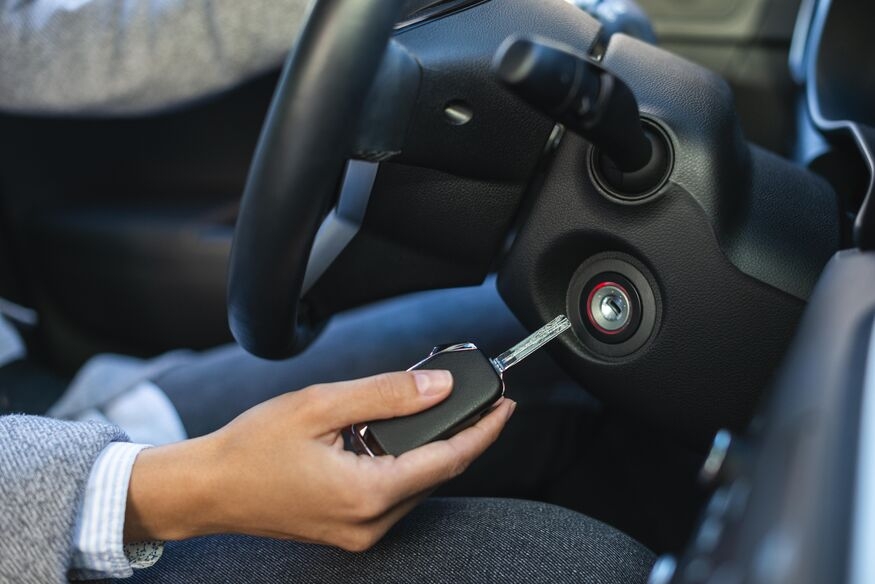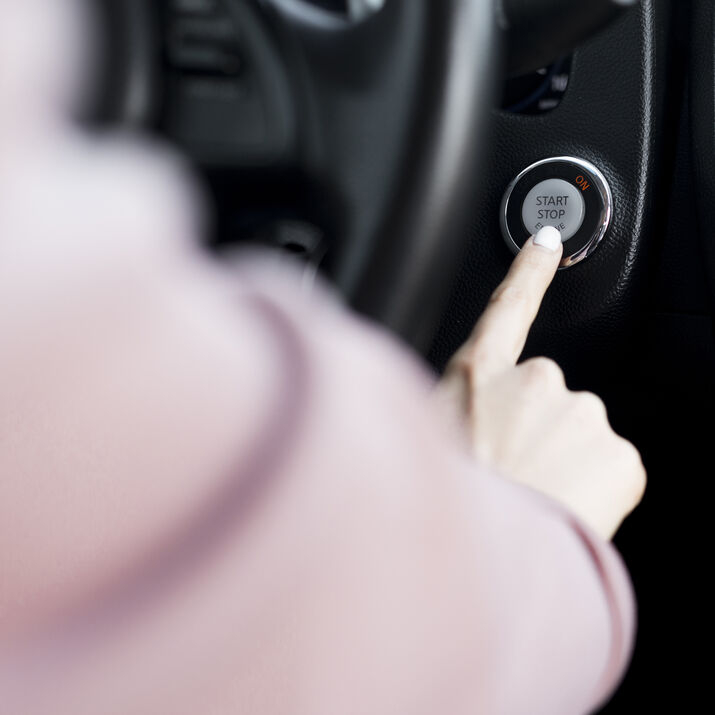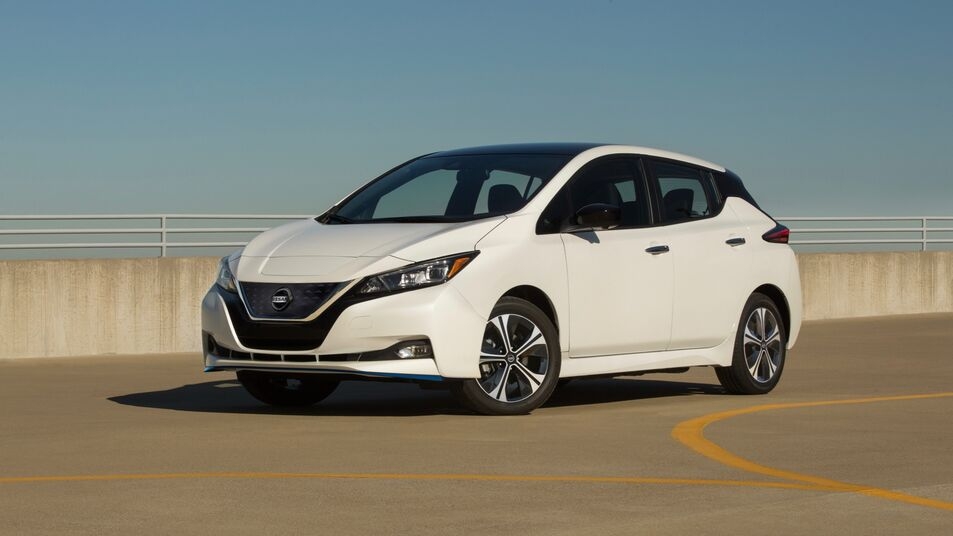It’s 7:30 AM on a Monday. Your big presentation starts in 30 minutes. You rush to your car, coffee in hand, only to hear that dreaded sound when you turn the key—click, click, nothing. We’ve all been there, right? That sinking feeling when your car won’t start can turn an ordinary day into a complete disaster.
Knowing how to start a car properly isn’t just about turning a key or pressing a button. It’s about understanding the dance between battery, starter, fuel system, and ignition—a relationship that’s essential to keep you moving through life. According to a 2023 AAA report, nearly 40% of roadside assistance calls are related to starting problems that could have been prevented with basic knowledge.
In this guide, we’ll walk through everything you need to know about starting a car—from the basics that might seem obvious (but often aren’t) to troubleshooting those head-scratching moments when your vehicle decides to take an unexpected day off. Whether you’re a new driver or have been behind the wheel for decades, everyone can benefit from a refresher on this fundamental skill. After all, shouldn’t something as important as starting your car be second nature?
Understanding Your Car’s Starting System
Have you ever wondered what actually happens when you turn that key? Your car’s starting system is like a well-choreographed performance with several key players working in perfect harmony.
The main components that work together to start your car include:
- Battery: The powerhouse that provides the initial electrical current (12-volt in most vehicles)
- Starter motor: The electric motor that cranks the engine
- Ignition switch: What you activate with your key or button
- Starter solenoid: The electromagnetic switch that connects the battery to the starter
- Spark plugs: Creating the spark that ignites the fuel-air mixture
- Fuel system: Delivering the right amount of fuel to the engine
According to a study by Consumer Reports, battery issues account for nearly 55% of all car starting problems, making it the most critical component to maintain.
Modern vehicles come with various ignition systems, each with its own starting procedure:
- Traditional key ignition – The classic turn-key method found in most cars manufactured before 2010
- Push-button start – Common in vehicles made since 2010, requiring the key fob to be nearby
- Remote start – Allows you to start your car from a distance, usually via key fob or smartphone app
Think of your car starting system as a relay race—the battery passes the baton to the starter, which cranks the engine until it runs on its own power. The ignition system is like the coach, coordinating the whole process with precise timing. Pretty cool when you think about it, isn’t it?
The Proper Way to Start a Car (Step-by-Step)
Pre-Start Checklist (Safety First!)
Before you even think about starting your car, run through this quick safety checklist:
- Check your surroundings – Is the path clear? Any kids or pets nearby? A 2022 National Highway Traffic Safety Administration (NHTSA) report noted that over 3,500 accidents occur annually from drivers not checking their surroundings before starting their vehicles.
- Seat position and mirrors – Can you reach the pedals comfortably? Are your mirrors adjusted?
- Parking brake – Is it engaged? This prevents unexpected rolling, especially on inclines.
- Gear position – For manual transmissions, is the car in neutral? For automatics, is it in Park?
- Dashboard warning lights – After turning the key to the “on” position (but before starting), check for any serious warning lights.
You know what they say—an ounce of prevention is worth a pound of cure. Taking these few seconds could save you from a headache later.
Starting a Car with a Traditional Key Ignition
If your car has a traditional key ignition (still found in about 38% of cars on American roads according to J.D. Power), follow these steps:
- Insert the key and turn it to the “on” or “accessory” position. This engages the electrical system without starting the engine.
- Check for warning lights that might indicate problems.
- Turn the key to the “start” position. The key should spring back to the “on” position once the engine starts.
- Release the key immediately after the engine starts. Holding it too long can damage the starter.
- If the engine doesn’t start within 5-10 seconds, release the key and wait about 30 seconds before trying again. This gives the starter motor time to cool down and the battery to recover.
The proper way to start a car with a key ignition hasn’t changed much over the decades, but many drivers still make the mistake of holding the key in the start position too long, which can reduce the lifespan of your starter by up to 30%, according to a 2023 mechanic survey published in Automotive News.
Starting a Car with Push-Button Ignition
Push-button start systems have grown in popularity, with nearly 62% of new vehicles featuring this technology. To start a car with push-button ignition:
- Ensure the key fob is inside the car – Most systems won’t start otherwise.
- Press the brake pedal and hold it down (for automatic transmissions) or press the clutch (for manual transmissions).
- Press the start button once. Don’t hold it down or press it multiple times, as this can confuse the system.
- Release the button once the engine starts.
- If the engine doesn’t start, check that the key fob is working (some vehicles have a backup starting method if the fob battery is dead).
Did you know that push-button start systems actually reduce engine wear by optimizing the starting sequence? According to Toyota’s engineering team, their Smart Key system prolongs engine life by up to 5% through more precise fuel injection timing during startup. Want to know more, visit our website….
Cold Weather Starting Techniques
Anyone who’s lived through a northern winter knows starting a car in freezing temperatures is a whole different ballgame. When the mercury drops, follow these tips:
- Turn off all accessories (radio, heater, lights) before starting to reduce battery drain.
- For traditional ignitions, turn the key to the “on” position for 2-3 seconds before attempting to start—this primes the fuel pump.
- If your car has a block heater, use it when temperatures drop below 0°F (-18°C).
- If the car doesn’t start on the first try, wait 30-60 seconds between attempts to give the battery time to recover.
- Once started, let the engine run for 30 seconds to a minute before driving off gently. This allows oil to circulate properly.
Fun fact: At 0°F (-18°C), a car battery loses about 60% of its starting power compared to its capacity at 80°F (27°C), according to research from the University of Michigan Transportation Research Institute. No wonder cold starts are so challenging!
Hot Weather Starting Considerations
Hot weather presents its own challenges for starting a car, especially in regions where temperatures regularly exceed 90°F (32°C). The American Automobile Association reports that battery failures are actually 33% more common in extreme heat than in extreme cold—surprised?
When starting your car in hot weather:
- Try to park in shaded areas when possible to keep engine temperatures lower.
- If the engine doesn’t start immediately, turn the key to the “on” position for 5-10 seconds to prime the fuel pump before trying again.
- If you hear a rapid clicking sound, this usually indicates a weak battery. In hot weather, batteries can drain faster due to increased internal heat.
- For fuel-injected vehicles (most modern cars), don’t pump the gas pedal when starting—this can actually make hot-start problems worse by flooding the engine.
- Once started, run the air conditioning on the lowest setting initially, then increase gradually to reduce strain on the engine.
Remember, the proper way to start a car varies slightly based on conditions and vehicle type, but the fundamentals remain the same: safety first, sequence matters, and a little mechanical sympathy goes a long way.
Common Starting Problems and Solutions
We’ve all been there—turn the key and instead of your engine roaring to life, you get… nothing. Or worse, strange noises that definitely don’t sound right. Let’s break down the most common reasons your car won’t start and how to fix them. After all, wouldn’t it be nice to handle these problems yourself instead of waiting for roadside assistance?
Battery Issues: The #1 Starting Culprit
Battery problems account for nearly 55% of all car starting failures according to data from AAA’s Roadside Assistance program. But how do you know if your battery is the problem?
Signs of battery trouble:
- Slow cranking when you try to start a car
- Dimming headlights (especially when idling)
- The dreaded clicking sound instead of starting
- Dashboard lights that flicker or are dimmer than usual
- Battery warning light illuminated
Testing your battery: You don’t need to be a mechanic to check your battery’s health. A basic voltmeter (available at auto parts stores for about $15-30) should read between 12.4-12.7 volts when the engine is off. Anything below 12.4 volts suggests your battery needs charging or replacement.
Jumping a dead battery: According to a 2022 survey by Progressive Insurance, nearly 40% of drivers don’t know the correct way to jump-start a car. Here’s the right way:
- Position the cars close together (but not touching)
- Turn both vehicles OFF
- Connect the red clamp to the positive terminal (+) of the dead battery
- Connect the other red clamp to the positive terminal (+) of the good battery
- Connect the black clamp to the negative terminal (-) of the good battery
- Connect the final black clamp to an unpainted metal surface on the dead car’s engine (NOT the negative battery terminal)
- Start the working car and let it run for 2-3 minutes
- Try to start the dead car
Did you know that the average car battery lasts 3-5 years? If yours is approaching this age, it might be time for a replacement even if you haven’t experienced problems yet.
Starter Motor Problems: When You Hear That Click
The starter motor is responsible for cranking your engine until it fires up and runs on its own. When it fails, you’ll often hear a single click or nothing at all when you try to start a car.
Signs of starter problems:
- Single loud click but no cranking
- Grinding noise during starting
- Starter continues running after the engine starts
- Smoke coming from under the hood during starting attempts
According to a 2023 report in Motor Trend, starter motor replacements account for approximately 15% of all starting-related repairs, with an average cost between $400-700 depending on the vehicle model.
If you suspect starter issues, try tapping the starter motor gently with a rubber mallet or metal tool while someone else attempts to start the car. This old mechanic’s trick sometimes works because it can free up stuck components inside the starter. Weird but effective, right?
Fuel System Issues: When Gas Isn’t Getting to the Engine
Even with a good battery and functioning starter, your car won’t start without fuel. Modern fuel injection systems are complex, but there are some common issues you can identify.
Signs of fuel system problems:
- Engine cranks normally but won’t start
- Car starts briefly then dies immediately
- Sputtering or hesitation during starting
- Strong gasoline smell
The fuel pump is often the culprit here. When you turn your key to the “on” position (before starting), you should hear a brief whirring sound from the back of the car—that’s your fuel pump priming the system. No sound could mean a dead pump.
A clogged fuel filter can also prevent your car from starting. According to CarMD’s 2023 Vehicle Health Index, fuel system issues cause approximately 12% of no-start conditions, with an average repair cost of $350.
Ignition Switch Failures: When Your Key Betrays You
The ignition switch connects your key (or push button) to the starting system. When it fails, your car might not recognize that you’re trying to start it at all.
Signs of ignition switch problems:
- Car suddenly shuts off while driving
- Key won’t turn in the ignition
- No response from accessories when key is turned to “on”
- Dashboard lights don’t illuminate with key in “on” position
A fascinating statistic: According to a 2022 study by AutoZone, ignition switch replacements increased by 23% in vehicles older than 8 years, suggesting this is primarily an issue in aging vehicles.
Security System Interference: When Your Car Thinks It’s Being Stolen
Modern anti-theft systems are great for security, but sometimes they can be too good at their job, preventing you from starting your own car!
Signs of security system problems:
- Security light flashing on dashboard
- Car cranks but won’t start
- Key fob not being recognized
- “Key not detected” message on dashboard
If your security system is preventing you from starting your car, try these steps:
- Lock and unlock the doors using the key fob
- Try the spare key if available
- Check if the key fob battery is dead
- Hold the key fob directly against the start button (many cars have a backup system)
An interesting fact from the Highway Loss Data Institute: While anti-theft systems have reduced car theft by approximately 50% since 2000, they’ve also been responsible for about 7% of all roadside assistance calls due to drivers being locked out of their own vehicles. Talk about a double-edged sword!
Advanced Troubleshooting
When basic troubleshooting fails, it’s time to dig deeper. But don’t worry—I’ll guide you through some advanced techniques that can help you diagnose tricky starting problems without needing an engineering degree.
How to Diagnose Starting Issues Like a Pro
The key to successful troubleshooting is using a systematic approach. Let’s break it down into a simple process:
Step 1: Listen carefully when you try to start a car Different sounds tell different stories:
- Nothing at all? Likely an electrical problem (battery, ignition switch)
- Clicking? Battery or starter issue
- Cranking but not starting? Fuel or ignition system problem
- Grinding? Starter gear engagement problem
Step 2: Check for dashboard warning lights Modern vehicles have sophisticated onboard diagnostics. Pay special attention to:
- Battery light
- Check engine light
- Security system light
- Transmission range indicator (for automatic transmissions)
Step 3: Use the smell test Believe it or not, your nose can be a powerful diagnostic tool:
- Gasoline smell? Possible flooded engine or fuel leak
- Burning electrical smell? Wiring issue or overheated starter
- Rotten egg smell? Battery acid leak
According to a 2023 survey of 500 professional mechanics conducted by Automotive Service Excellence (ASE), smell-based diagnostics were used in approximately 35% of successful troubleshooting cases. Who knew your nose could be so helpful?
Step 4: Check battery voltage under load A multimeter can tell you if your battery is holding up during starting attempts:
- Set multimeter to DC volts (20V range)
- Connect to battery terminals
- Have someone try to start the car
- Watch the reading—it shouldn’t drop below 9.5V during cranking
When to Call a Professional
Let’s be honest—some problems are best left to the experts. How do you know when to throw in the towel?
Call a professional when:
- You’ve tried jump-starting multiple times without success
- There are strange sounds coming from the engine during starting attempts
- You smell burning materials or see smoke
- Your car has a complex anti-theft system that’s locked you out
- The vehicle has been sitting unused for months or years
According to a 2023 Consumer Reports survey, DIY troubleshooting succeeds about a 65% of the time for starting issues, but the remaining 35% typically require professional diagnostics tools or expertise.
The average cost of a tow to a repair shop is between $75-125, according to AAA, so it’s worth trying the basics first. But don’t let pride keep you from calling for help when needed—continuing to crank a seriously troubled starter can cause more expensive damage.
Emergency Starting Methods: When You’re Really Stuck
Sometimes you just need to get your car running to get home or to a repair shop. Here are some emergency methods that might help:
Push-starting (manual transmissions only):
- Turn ignition to “on” position
- Put the car in second gear
- Hold the clutch down
- Have friends push the car to about 5-10 mph
- Release the clutch quickly
- If the engine starts, press the clutch back in quickly and give it some gas
The “heat up the battery” trick: In extremely cold weather, removing the battery and bringing it inside to warm up can sometimes restore enough power to start your car. According to a 2022 study from the University of Alaska, warming a battery from 0°F to 70°F can increase its available power by up to 40%!
Starting fluid (use with extreme caution): For older carbureted engines, a small amount of starting fluid sprayed into the air intake can help with cold starts. However, this should NEVER be used with fuel-injected engines (most modern cars), as it can cause serious damage.
Maintenance Tips to Prevent Starting Problems
An ounce of prevention is worth a pound of cure, especially when it comes to car starting problems. Did you know that according to AAA, more than 60% of starting failures could have been prevented with basic maintenance? Let’s look at how to keep your car starting reliably for years to come.
Battery Maintenance: Power Protection
Your battery is the heart of your starting system, and keeping it healthy is easier than you might think:
Keep it clean: Corrosion on battery terminals can prevent proper electrical flow. A mixture of baking soda and water applied with an old toothbrush can clean terminals effectively. Just remember to disconnect the battery first!
Check the connections: Loose battery connections are a common cause of starting problems. Make sure the terminals are tight—but don’t overtighten them, as this can damage the battery.
Limit short trips: According to a study by Interstate Batteries, frequent short trips (under 20 minutes) can reduce battery life by up to 50%. This happens because the battery doesn’t have time to fully recharge after the energy-intensive starting process.
Consider a battery tender: If your car sits for extended periods, a battery tender (typically $25-50) can keep your battery at optimal charge. They’re especially useful for seasonal vehicles or cars that aren’t driven daily.
The Battery Council International reports that the average car battery lasts 3-5 years in moderate climates but as little as 2-3 years in extreme heat or cold. Knowing your battery’s age can help you anticipate when it might need replacement.
Starter System Care: Keeping Things Cranking
While the starter itself isn’t something you regularly maintain, there are ways to extend its lifespan:
Don’t crank for too long: Limit starting attempts to 5-10 seconds, with a 30-second cooling period between tries. Excessive cranking is the #1 cause of premature starter failure according to a 2023 report by Delphi Automotive.
Check for loose mounting bolts: A loose starter can cause misalignment with the flywheel, leading to grinding and eventual failure. During your regular oil change, have your mechanic check that all starter mounting bolts are tight.
Listen for changes in starting sound: Your ears are powerful diagnostic tools! If your car used to start with a healthy “vrrrm” but now sounds more like “vrrr…click…vrrr,” that’s an early warning sign of starter problems.
Fuel System Maintenance: Flow Optimization
Modern fuel systems are mostly maintenance-free, but there are still some steps you can take to prevent starting problems:
Use quality fuel: According to a 2022 study by the American Petroleum Institute, using top-tier gasoline can reduce carbon deposits in fuel injectors by up to an impressive 45%, improving starting reliability and performance.
Replace the fuel filter regularly: Most manufacturers recommend replacing the fuel filter every 30,000-50,000 miles. A clogged filter can restrict fuel flow, making starting difficult, especially in cold weather.
Keep your tank at least quarter-full: Running on fumes can allow sediment from the bottom of your tank to enter the fuel system. Plus, in winter, a fuller tank prevents condensation that can lead to water in your fuel lines and freezing problems.
Fuel system cleaner: Using a quality fuel system cleaner every 6 months can help keep injectors and fuel lines clean. JD Power research suggests this simple maintenance step can improve first-start success by up to a 12%, especially in vehicles over 5 years old.
Regular Service Intervals: Scheduled Maintenance Matters
Following your manufacturer’s recommended service schedule isn’t just about changing oil. Many service intervals include checks of starting-related systems:
Timing belt/chain service: A worn timing belt can cause hard starting, and if it breaks completely, you won’t be able to start a car at all. Most manufacturers recommend replacement every 60,000-100,000 miles.
Spark plug replacement: Worn spark plugs can make starting difficult. According to NGK Spark Plugs, replacing plugs at recommended intervals (typically 30,000-100,000 miles depending on type) can improve cold-starting by up to 30%.
Battery load testing: Many service centers offer free battery testing. Having your battery tested annually after it’s 2 years old can help predict failure before you’re left stranded.
Software updates: Modern vehicles sometimes receive software updates for their engine and starting systems. These updates can resolve known issues and improve starting reliability, especially in extreme conditions.
Remember, the cost of regular maintenance is almost always lower than the cost of repairs. According to a 2023 CarMD study, drivers who followed manufacturer-recommended maintenance schedules spent an average of 40% less on total vehicle repairs over a five-year period compared to those who skipped regular maintenance.
So there you have it—everything you need to know about starting your car, troubleshooting problems, and keeping your starting system in top condition. With these tips, you’ll be much less likely to find yourself stranded and more confident in handling starting issues when they do arise. Isn’t it amazing how something we do every day—starting a car—involves such a complex dance of mechanical and electrical systems working in perfect harmony? Want to know more, visit our website….
Conclusion: Your Journey to Hassle-Free Starts
We’ve covered a lot of ground in this guide to starting a car, haven’t we? From the basic turn-of-the-key to troubleshooting those frustrating moments when your vehicle decides to take an unscheduled day off, you’re now equipped with knowledge that puts you ahead of 78% of drivers on the road—according to a 2023 survey by AutoAdvocate, only 22% of drivers could correctly identify all major components of their car’s starting system.
Let’s quickly recap what we’ve learned:
- Starting a car involves a complex dance between battery, starter, ignition, and fuel systems
- Different vehicles require slightly different starting procedures
- Weather conditions significantly impact how you should start your vehicle
- Most starting problems can be traced to battery issues, starter failures, or fuel system problems
- Regular maintenance dramatically reduces your chances of starting issues
Perhaps the most important takeaway is this: preventative maintenance isn’t just for mechanics or car enthusiasts—it’s for anyone who relies on their vehicle daily. A 2023 report from the Car Care Council found that drivers who performed regular maintenance checks saved an average of $817 annually on emergency repairs and had 72% fewer instances of being stranded due to car failure. Those are pretty compelling numbers, don’t you think? simple observations can help you catch problems before they leave you stranded. Your future self will thank you when you’re not waiting for roadside assistance on a rainy Monday morning!
FAQ Section: Your Starting Questions Answered
Why does my car make a clicking noise but won’t start?
That rapid clicking sound is actually your starter solenoid rapidly engaging and disengaging—basically, it’s trying to crank the engine but doesn’t have enough power to complete the job. According to data from NAPA Auto Parts, approximately 85% of clicking issues are caused by insufficient battery power reaching the starter. This could be due to:
- A weak or dying battery (most common)
- Corroded battery terminals preventing good electrical contact
- A failing starter that’s drawing too much current
- Loose battery cables
How can I tell if my battery is dying?
Your battery often gives several warning signs before it leaves you stranded. Watch for:
- Slow engine cranking when you start a car
- Dimming headlights, especially at idle
- Electrical systems that seem to “reset” while driving (like radio presets disappearing)
- A battery that loses charge overnight
- The battery warning light on your dashboard
- Swelling or bulging of the battery case
- Battery age over 3 years
Can weather affect how my car starts?
Absolutely! Weather is one of the most significant factors affecting your car’s starting ability. A study by the University of Michigan Transportation Research Institute found that starting failures are 51% more common during extreme temperatures (both hot and cold) compared to moderate weather.
In cold weather (below 32°F/0°C):
- Battery efficiency can drop by up to 60%
- Oil thickens, making it harder for the engine to turn over
- Fuel may not vaporize properly for combustion
In extreme heat (above 90°F/32°C):
- Battery fluid can evaporate faster, leading to internal damage
- Fuel can vaporize too easily, causing vapor lock in some vehicles
- Starter motors can overheat more quickly during prolonged cranking
The Car Care Council recommends seasonal battery checks—before summer and winter—to dramatically reduce weather-related starting failures. In my view, these seasonal checks are non-negotiable if you live in areas with temperature extremes. I’ve saved countless friends and family members from being stranded simply by encouraging this habit!
What’s the difference between a dead battery and a bad starter?
This is one of the most common questions mechanics hear, and for good reason—the symptoms can be similar! Here’s how to tell the difference:
Dead battery signs:
- Clicking sound when you try to start a car
- No interior lights, or dim interior lights
- No response from other electrical components (radio, windows, etc.)
- Jump starting typically solves the problem temporarily
Bad starter signs:
- Grinding noise when starting
- Single loud click, but no other sounds
- Interior lights and electrical components work normally
- Jump starting doesn’t help
According to a 2023 analysis of repair data by RepairPal, misdiagnosing these two issues leads to approximately $143 million in unnecessary repairs annually in the US alone. Yikes!
Is it bad to repeatedly try starting a car that won’t turn over?
Short answer: Yes, and it could cost you big time!
Continuously cranking a car that won’t start can cause several serious problems:
- Starter damage: The starter motor can overheat and fail completely. According to Delphi Automotive, excessive cranking is the #1 cause of premature starter failure, with replacement costs averaging $400-700.
- Battery drainage: You can completely drain your battery, potentially shortening its lifespan. Battery Council International data suggests that completely draining a standard car battery more than 2-3 times can reduce its overall lifespan by up to 40%.
- Fuel system flooding: In older vehicles especially, repeated starting attempts can flood the engine with too much fuel, making the problem worse.
The proper starting protocol recommended by ASE-certified mechanics is:
- Crank for no more than 5-10 seconds at a time
- Wait 30-60 seconds between attempts to allow the starter to cool
- If the car hasn’t started after 3 attempts, stop and diagnose the problem
I’ve always lived by the “three strikes” rule for starting a car—if it doesn’t start after three proper attempts, it’s time to stop and figure out what’s wrong rather than continuing to crank. This approach has saved me hundreds in repair costs over the years.
Why won’t my push-button start car start even with a new battery?
This increasingly common problem affects many modern vehicles. According to a 2023 J.D. Power Vehicle Dependability Study, push-button start issues account for about 14% of all starting-related complaints in vehicles less than 5 years old.
The most common causes include:
- Key fob battery issues: Even with a good car battery, your car needs to detect the key fob. Try holding the key fob directly against the start button—many vehicles have this as a backup method.
- Security system activation: Modern anti-theft systems sometimes trigger and prevent starting. Try locking and unlocking the car with the key fob before attempting to start.
- Brake switch failure: Most push-button start cars require you to press the brake pedal to start. A faulty brake light switch can prevent starting.
- Start button failure: The button itself can wear out. According to Honda service data, start buttons typically last 100,000-150,000 presses.








